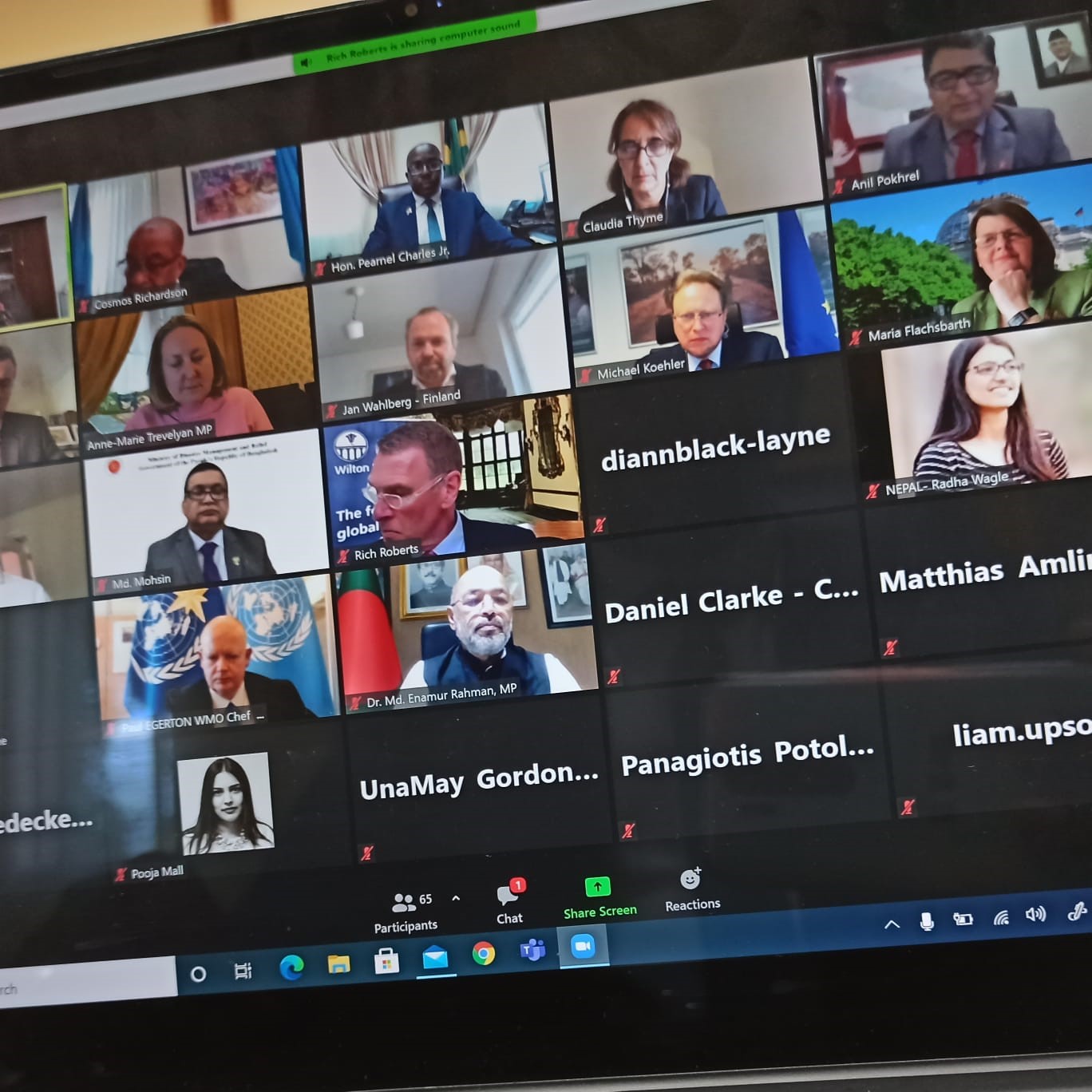Work Ongoing To Identify Disaster Prone Areas In Jamaica To Reduce Risk To Citizens – Hon. Pearnel Charles Jr.
By: , May 11, 2021The Full Story
Minister of Housing, Urban Renewal Environment and Climate Change, HURECC, Hon. Pearnel Charles Jr., has emphasized the need for increased awareness, preparedness prediction, and warning systems considering the risks posed by a changing climate.
According to Minister Charles, natural hazards are becoming a regular part of life for people worldwide and have the potential to destabilize the socio-economic fabric of countries around the world and create undue hardships for citizens.
Minister Charles quoted an article by the ‘Platform on Disaster Displacement’, which notes that on average, 26 million people are displaced every year by disasters, including weather and climate-related hazards.
“This number represents displaced and severely affected lives”, the Minister stated.
Minister Charles was speaking this morning at a high-level Ministerial virtual roundtable discussion hosted by the Risk Informed Early Action Partnership (REAP), in association with Wilton Park, an executive agency of the United Kingdom (UK) Foreign, Commonwealth & Development Office which provides a global forum for strategic discussion on a range of topics.
In his presentation, the Minister noted that Jamaica is among the countries considered to be the most vulnerable to the adverse effects of climate change based on its geographical location, and a heavy dependence on natural resources. As such, he said, work has been ongoing to identify disaster prone areas, and incorporate this information into planning, to reduce risk and become more climate resilient.
“Indeed, Jamaica is the first country globally, to begin developing a predictive climate risk assessment planning tool for major infrastructure areas under the Coalition for Climate Resilient Investment (CCRI).
The tool will enable decision-makers to assess climate risk to Jamaica’s infrastructure and visualize “hot spots” of economic and social value at risk. Testing on this tool will begin in June this year”, the Minister said.
He added that improvements to forecasting are being made by the Meteorological Services Branch of the MHURECC, through the acquisition of technology including a Doppler Radar system, and automatic weather stations that will allow it to remotely retrieve and relay information about the existing weather in real-time to a monitoring platform.
“We are also in the process of developing a climate change data node, which will efficiently store, manage and provide access to climate related data for all users, to facilitate planning and promote sustainable development”, the Minister said.
Minister Charles also emphasized that risk mitigation must include the protection of cultural heritage which he noted should be included in planning and action.
“Preservation of cultural and historic sites should receive attention through discussion and informed decision making. In addition, the protection of our natural resources including wildlife, fish, and plants should be identified in mitigation plans and protection measures”, he said.
The Minister specifically pointed to the gender implications of climate change risk.
“For women, particularly poor women, any displacement due to natural hazards can have a deleterious effect on their lives and livelihoods. The strategies to deal with the impact of natural hazards must include a gender component”.
He emphasized that hazard mitigation measures will require co-ordination among all stakeholders, with a view to increasing the effectiveness and sustainability of targeted programmes.
“We all need to play our part to ensure that we protect our environment, prepare for natural disasters, and adhere to, and enforce planning and zoning regulations”, Minister Charles said.
The virtual dialogue was aimed at discussing existing commitments and mobilizing further action towards achieving the ambitious target of making one (1) billion people safer from climate related disasters by 2025.


